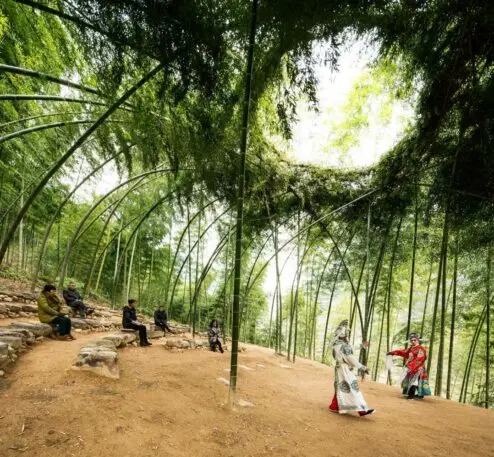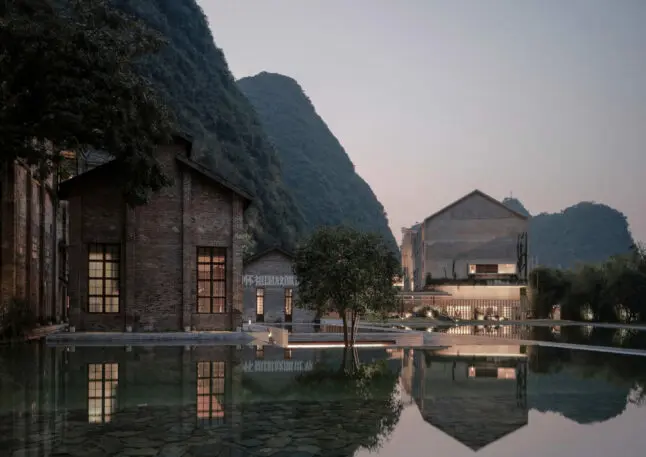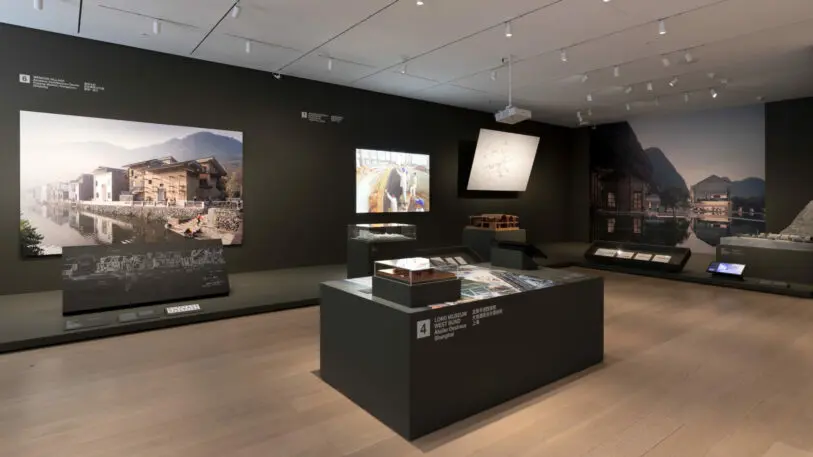Near the village of HengKeng in China’s Fujian province, there’s a bamboo forest with an open-air theatre, also made of bamboo. The twist, however, is that no bamboo was actually cut to build the theater. Instead, living bamboo trees were bent and roped until they formed a dome with a circular opening at the top.

Titled Reuse, Renew, Recycle: Recent Architecture from China, the exhibition showcases a new generation of Chinese architects who are promoting social and environmental sustainability by transforming industrial buildings, recycling materials, and reinterpreting ancient building techniques. At a time when the meaning of sustainability is often defined by a slew of standards and certifications rather than the lived, spatial experience, the exhibition introduces a more nuanced definition that’s inspired by the use of traditional materials and a stronger connection between architecture and nature.
“We want to redirect the global conversation to ecological approaches to architecture,” says Martino Stierli, who curated the exhibition along with Evagenlos Kotsioris. In the city of Guilin, Vector Architects converted an abandoned sugar factory into a hotel complex. In Beijing, Zhang Keof of ZAO/standardarchitecture has proposed a series of independent living units inserted into one of the city’s myriad Hutong courtyards, which have been a target of mass demolition for over a decade. And in Shanghai’s West Bund area, Philip F. Yuan has salvaged and reused grey bricks from an old warehouse to build a new envelope for a museum.

According to Kotsioris, Western architects refer to sustainability in a “technocratic way” that is driven by certifications and a “checkmark mentality” that zeroes in on utility and performance. “You can have the headquarters of a Chinese company designed by a Western firm with Carrara marble extracted across the globe, and still have a LEED Platinum certification because the points system doesn’t take into account the full production cycle,” he says.
For Chinese architects, the word sustainability doesn’t come up often. Instead, Kotsioris explains that they follow basic tenets that revolve around harmony with nature or the continuation of the past. In Jinhua City, for example, Wang Shu and Lu Wenyu, of Amateur Architecture Studio, designed a humble teahouse on a slightly slanted plot. The slant was inspired by traditional Chinese inkstones used to mix dry ink and water in art and calligraphy (the exhibition features a striking mock-up of the façade, which boasts over a hundred different glazes inspired by the function of an inkstone). The tie to sustainability as we know it may not immediately be apparent here (in fact, the word is rarely used through the exhibition). And yet, using a traditional object to inspire the shape of a building speaks to a more nuanced meaning of sustainability in its poignant connection to history.

It’s worth noting that these projects are a fraction of what’s being built in China—some of which are indeed massive. But it’s also important to remember that what we see in the West can be influenced by the monumental scale of a project coupled with the fact that the outsized projects are often designed by Western architects who are hired “for prestige,” says Stierli. Dr. Xiangning Li, who teaches architecture at Tongji University and was a consultant for the exhibit, says Chinese architecture has come a long way over the past three decades. “As I look back and reflect on the changes that have taken place, I am pleased to see contemporary Chinese architects constantly employing the new products emerging en masse to express their interpretations of tradition,” he says. “A cultural consciousness rooted in the collective unconsciousness is now taking on varied contemporary forms.”
Compared to earlier architects who often shied away from cultural associations with Chinese traditions—or mirrored traditional Chinese architecture without translating it into the 21st century—Li says contemporary architects are now embracing traditional materials in innovative ways. “Contemporary construction techniques frequently lead to the unexpected dialogue between tradition and progress,” he says.

Over the past decade, China has begun to develop its own architectural identity, led by a burgeoning group of architects, many of whom are portrayed in the show. For Stierli, the exhibition is an opportunity to highlight this evolution and the environmental benefits associated with it. “In the West today, we tend to see architecture as part of the problem,” he says, in reference to the building sector’s hefty carbon footprint. “But these projects give us hope and the belief that architecture can be part of the solution.”
The exhibition is free to access and on view through July 4, 2022, in the street-level galleries of the Museum of Modern Art.
Recognize your brand’s excellence by applying to this year’s Brands That Matter Awards before the early-rate deadline, May 3.
